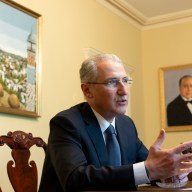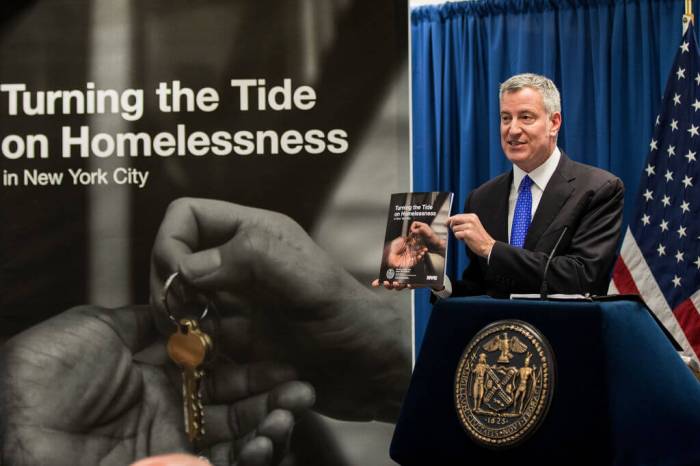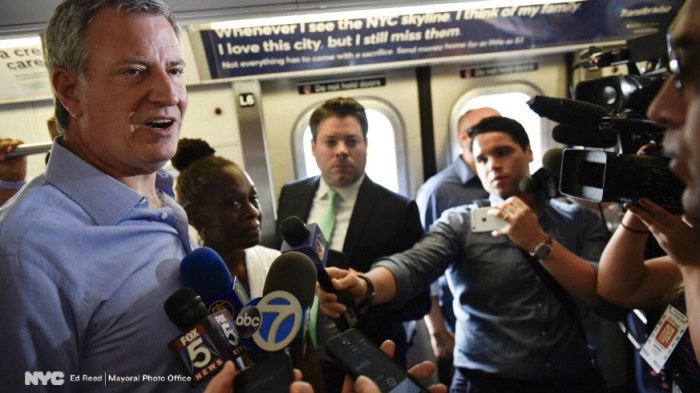A newly proposed streetcar — still a couple decades in the making — is hoping to save New Yorkers time, while also connecting growing neighborhoods in the outer boroughs.
Mayor Bill de Blasio outlined further details on Tuesday for the Brooklyn-Queens Connector (BQX), a streetcar line expected to stretch a total of 16 miles from Astoria, Queens to Sunset Park in Brooklyn. The plan for the streetcar was initially announced by the mayor during his Feb. 4 State of the City speech. It will be the city’s first streetcar in more than 50 years. RELATED:Proposed streetcar to allow NYC to compete globally, but not anytime soon “People in neighborhoods like Red Hook haven’t had the quality transit they need and deserve. This new service means opportunity for those families, and it’s also going to strengthen communities up and down the waterfront,” de Blasio said in Brooklyn. “Anyone can see the enormous growth happening here – it’s time we brought new transit to these neighborhoods for all those people and jobs.” According to the city, the waterfront shared by Brooklyn and Queens is considered one of the fastest growing areas of the city, with over 400,000 residents and about 296,000 workers.
However, although the neighborhoods are constantly growing the transportation options haven’t caught up.
The BQX — which according to local leaders will bring the neighborhoods a “21st century public transit service” —is proposed to run along areas such as Astoria, Ravenswood, Long Island City, Greenpoint, Williamsburg, Brooklyn Navy Yard, DUMBO, Downtown Brooklyn, Brooklyn Heights, Cobble Hill, Red Hook, Gowanus and Sunset Park. “This corridor is where the present and the future of our city are happening. It’s where jobs and housing are growing, and where innovators and businesses are moving every day,” said Alicia Glen, deputy mayo for Housing and Economic Development. “The BQX will tie all these incredible success stories together, and open up even more opportunity for our people.” The streetcar will also bring together 13 New York City Housing Authority developments and also connect 10 ferry landings, 15 subway routes and more than 30 bus lines.
Once fully constructed, the BQX is expected to serve about 50,000 riders per weekday — making it one of the largest urban streetcar systems in the country — and the average rider will save between 15 to 20 minutes each way. The fare to ride the BQX will be the same as a single-ride MetroCard, and de Blasio added that the city is in talks with the MTA to discuss transfers.
RELATED:Parking-by-phone coming to NYC: Mayor de Blasio The preliminary estimate for the streetcar line is about $2.5 billion with the city raising money through creating a nonprofit with the authority to issue tax-exempt bonds. The city will in turn pay off the debt by taking in a percentage of increased real estate values of both existing and new developments. Once built the fares will cover about two thirds of the yearly operating costs will the city looking into additional revenue, through areas such as advertising. Even with the hype, it will be a while until New Yorkers actually see the streetcar, as the city must first complete extensive community outreach and planning. Groundbreaking for the project is not expected until 2019 or 2020.















